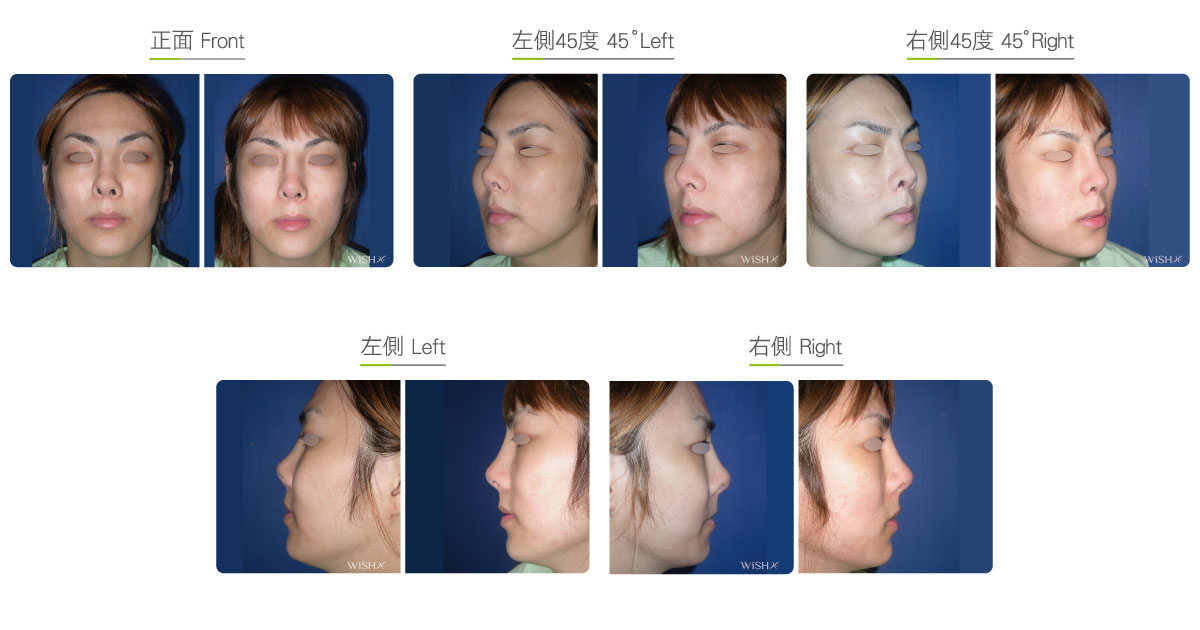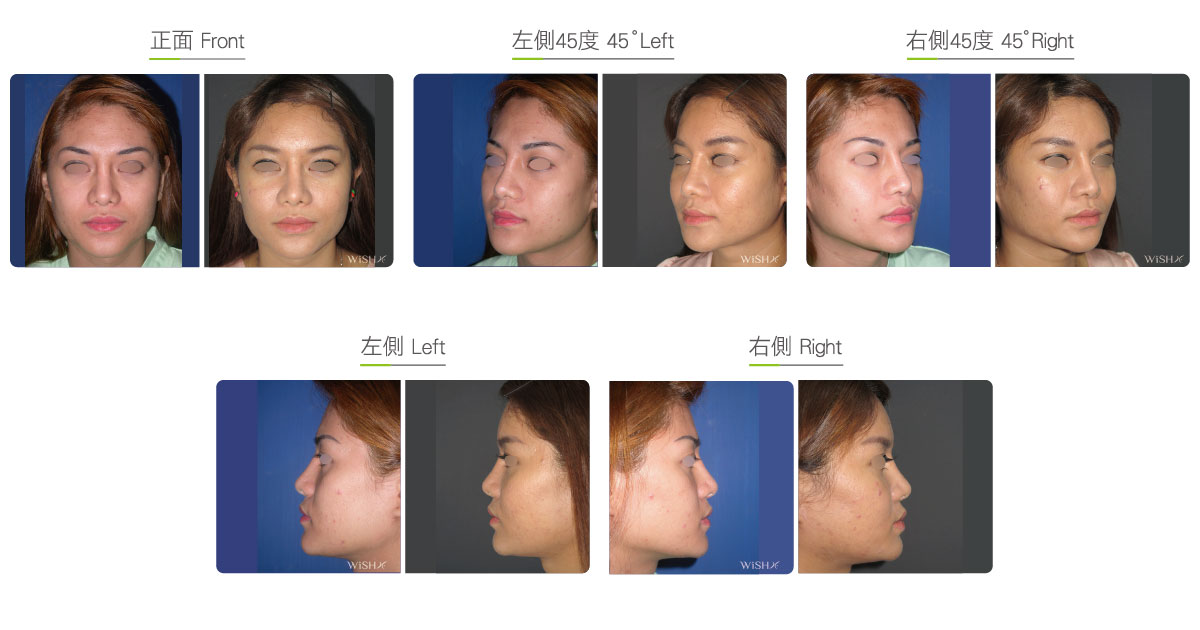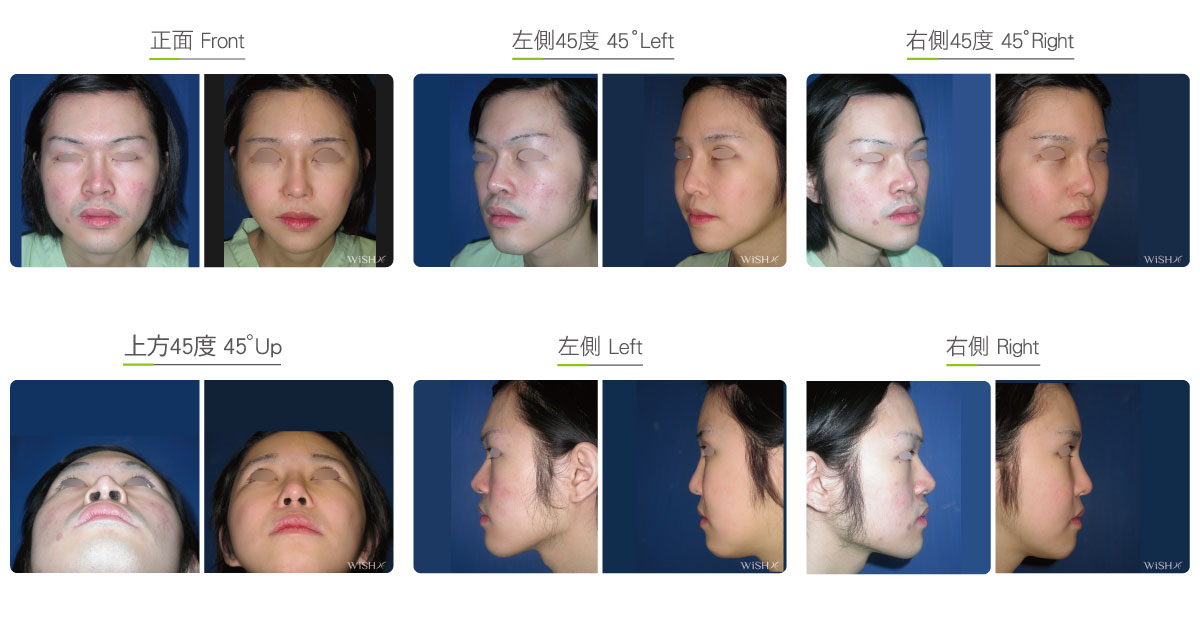Male-to-Female Facial Bone Reduction
The primary difference between male and female facial contours lies in the width of the cheekbone or mandible and the thickness of bones. As the male face is relatively more prominent and angular and has a wider and more expanded frontal area than the female face, it appears square, greatly different from the female oval face. Therefore, male-to-female facial conversion should highlight the softening of skeletal contour lines, and patients generally have to undergo several facial bone reductions to fulfill the traditional cognition about females; this change is also called composite facial bone remodeling. The concrete contents and scope are determined based on the patient’s original conditions and requirements, commonly including cheekbone reduction, mandible reduction, or V-shape chin osteotomy (genioplasty) to achieve a complete face change. Compared with common female bone reduction, this reduction is almost the same but has to reduce more in bone width and thickness and is usually conducted along with multiple bone reductions or other plastic surgeries like double eyelid surgery, augmentation rhinoplasty, or lip reduction. Therefore, the surgical duration is relatively long, and the change in the proportion of the overall facial contour by each surgery should be accurately calculated by the physician to attain a new facial contour characteristic to females.
Surgical conditions
Duration
- Type of anesthesia: General anesthesia
- Type of incision: Incision at the upper and lower gums/preauricular hairline (approximately 1 cm)
- Recovery: 10–14 days
- Removal of stitches: 7–10 days
General instructions
No food and water on the day of surgery
Preoperative:
- Suspend the use of anti-coagulants for 1 week if used.
Postoperative:
- Eat only soft or liquid foods for 2 weeks postoperatively.
- Avoid forced opening of the mouth or eating too hard foods for 1 month postoperatively.
- Avoid outer force collision to or squeezing of the face for 3 months postoperatively.
- Try to avoid excess chewing in the future to prevent bone hyperplasia or regrowth.
Ideal candidates
- Male patients who want to have a feminine face
- Those who want to change to a neutral face shape
Possible complications
- Poor bone healing
- Bone loss
- Skin looseness
- Temporary facial numbness
- Unnatural facial expression
Surgical advantages
-
It is able to make the original masculine rough facial contour softer.
-
It is able to fulfill the subjective face change requirements of male-to-female patients.
-
Composite bone reduction achieves face change at one time.
Surgical drawbacks
-
The surgery is relatively extensive and complex, and postoperative recovery is slow.
-
Facial skin looseness may occur.
-
The original face shape is difficult to be restored in the future.
-
Temporary chin numbness or mouth asymmetry may occur.



